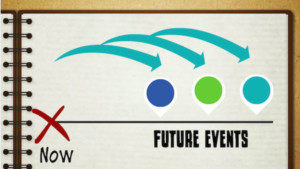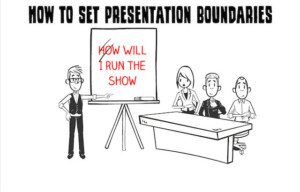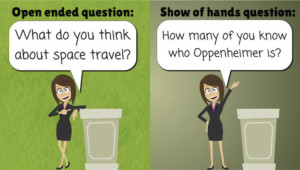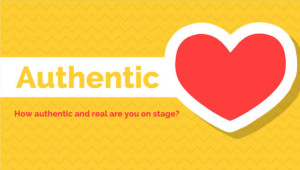Every time you introduce yourself to a group, you have to connect three things:
You have to connect yourself with the topic and then connect your topic with the audience.
This concept is called the “Triangle of Trust” in the speaking world. When you do it right, the audience will love, trust, and follow you. When you do it the wrong way, the audience will mistrust you.
Here is why:
If you talk about yourself without connecting to the topic, then your introduction will be out of context. People will wonder why you are talking about this particular subject.
If you talk about yourself without connecting to the audience, then no one will care. People do not like to listen to others when they do not feel any emotional connection to the other person.
Remember when your mom told you “don’t talk to strangers.” that taught you as an adult not to trust strangers. Your audience went through a similar upbringing, and if you don’t make them feel connected to you in someway, they will not trust you.
To be effective, you need to connect all three: you, the topic and the audience.
There are several formulas you can use to accomplish this triangle connection: one is the hero’s journey formula and the second is the link back memory formula as shared in previous blog articles.
Today you will learn the Stereotype formula for introducing yourself.
This formula leverages a stereotype people have about your profession to connect you with the audience and your topic.
Here is an example of how the formula is set up:
My name is _______, I am _______(Job title): Stereotype_______________
If you are an engineer your introduction could look like this:
My name is ____Peter_Khoury__, I am ___a pharmaceutical engineer____(Job title): Stereotype__________I am the typical engineer people make fun of; I am not typically the first one to jump up at the chance to present in front of groups.
Note: the Stereotype here is that engineers don’t like presenting in front of groups and they are introverted. I can say this because I used to be a pharmaceutical engineer and I know that was the case for me.
This stereotype is the part that is going to connect you to the audience by tapping into the stereotypes they have about engineers. The audience usually laughs here. It’s ok to be a little self-deprecating, as long as it’s light and fun.
Then after you say that line you can make a transition into your presentation. I would use Today as a transition word after that stereotype formula:
Today I had to present on topic X because the results are amazing….
This transition connects you back to the topic.
Here is how the whole thing might look:
My name is ____Peter_Khoury__, I am ___a pharmaceutical engineer____(Job title): Stereotype__________I am the typical engineer people make fun of; I am not typically the first one to jump up at the chance to present in front of groups.
Today I had to present on topic X because the results are amazing….
——
Here is another example: A CTO talking to her developers.
Name, Job: My name is ___Mary___, I am __the CTO of XYZ_____(Job title) Stereotype: I am a developer and have always been a developer; Code runs in my blood. Somehow I made it into management and now I am the CTO of our organization, which is great because I can see both sides.
Today I would like to talk about our current infrastructure and its limitations and then we will talk about the plans to turn it around. I know as a developer you will appreciate that.
Here is another example: Product Manager for financial analysis products
Name, Job: My name is _Rahol______, I am ____the product manager on our platform___(Job title) Stereotype: I am a nerd. I always loved numbers, and that’s why I studied accounting in college. I also have a love affair: I love elegant, simple, and well-designed products.
Today I will reveal our new financial platform; it combines both of my passions: numbers and art. It’s an efficient, elegant, and easy to use product for financial institutions.
Conclusion
The formulas I share with you will help you stand out and be memorable and relatable in your organization. Make sure you put them to use right away. If you want to practice this in front of a group, make sure you join our weekly instructor-lead-virtual-class.




